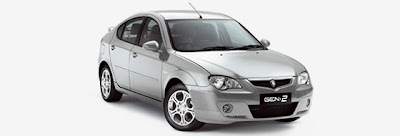Ferrari
From Wikipedia, the free encyclopedia
Type Subsidiary
Founded 1947
Founder Enzo Ferrari
Headquarters Maranello, Italy
Key people Luca di Montezemolo, Chairman and President
Jean Todt, CEO
Giancarlo Coppa CFO
Industry Automotive
Parent Fiat S.p.A.
Website
www.ferrariworld.com 
Ferrari Enzo. Oil painting of an Enzo Ferrari by Tamás Kádár, 2007.Ferrari S.p.A. is an Italian sports car manufacturer based in Maranello and Modena, Italy. Founded by Enzo Ferrari in 1929 as Scuderia Ferrari, the company sponsored drivers and manufactured race cars before moving into production of street legal vehicles in 1947 as Ferrari S.p.A.. Ferrari's cars are among the most desirable of vehicles to own and drive, and are one of the ultimate status symbols of wealth in the world. Throughout its history, the company has been noted for its continued participation in racing, especially in Formula One, where it has largely enjoyed great success, especially during the 1950s, 1960s, 1970s, late 1990s, and 2000s.
Finally, after years of financial struggles, Enzo Ferrari sold the company's sports car division to the Fiat group in 1969 in order to help ensure continued financial backing for the foreseeable future. Enzo Ferrari himself retained control of the racing division until his death in 1988 at the age of 90.

Ferrari also has an internally managed merchandising line that licenses a wide range of products bearing the Ferrari brand, including eyewear, pens, pencils, perfume, clothing, high-tech bicycles, cell phones, and even laptop computers. Financial Times named Ferrari number one on its 2007 list of the 100 Best Workplaces in Europe.
 History of Ferrari 1929–1946
History of Ferrari 1929–1946Enzo Ferrari never intended to produce road cars when he formed Scuderia Ferrari in 1929 as a sponsor for amateur drivers headquartered in Modena. Ferrari prepared and successfully raced various drivers in Alfa Romeo cars until 1938, when he was officially hired by Alfa as head of their racing department.
In 1940, Alfa Romeo was absorbed by the Fascist government of Benito Mussolini as part of the Axis Powers' war effort. Enzo Ferrari's division was small enough to be unaffected by this. Because he was prohibited by contract from racing for four years, the Scuderia briefly became Auto Avio Costruzioni Ferrari, which ostensibly produced machine tools and aircraft accessories. Also known as SEFAC (Scuderia Enzo Ferrari Auto Corse), Ferrari did in fact produce one race car, the Tipo 815, in the non-competition period; it was thus the first actual Ferrari car (it debuted at the 1940 Mille Miglia), but due to World War II it saw little competition. In 1943 the Ferrari factory moved to Maranello, where it has remained ever since. The factory was bombed by the Allies in 1944 and rebuilt in 1946, with the war ended and the Mussolini government overthrown, to include a works for road car production. Right up to Il Commendatore's death, this would remain little more than a source of funding for his first love, racing.
"Scuderia Ferrari" literally means "Ferrari Stable"; the name is figuratively translated as "Team Ferrari".
1947–presentThe first Ferrari road car was the 1947 125 S, powered by a 1.5 L V12 engine; Enzo reluctantly built and sold his automobiles to fund the Scuderia. While his beautiful and fast cars quickly gained a reputation for excellence, Enzo maintained a famous distaste for his customers, most of whom he felt were buying his cars for the prestige and not the performance. Ferrari road cars, noted for magnificent styling by design houses like Pininfarina, have long been one of the ultimate accessories for the rich. Other design houses that have done work for Ferrari over the years include Scaglietti, Bertone, Touring, Ghia, and Vignale.
In 2005, four universities were granted the opportunity to design the next vehicle line-up for Ferrari in a student competition named 'Ferrari Concepts of the Myth'. Twenty winners were allowed to show off their concepts in a ¼ scale model and present their work to the board at Ferrari to allow for three out right winners to have the chance to work in the Ferrari design studio at Maranello.
As of 2007, the Fiat Group owns 85% of Ferrari, Mubadala 5%, and Enzo's son Piero 10%. Fiat has shelved plans for an IPO because Fiat Auto has now returned to profitability, thus removing pressure from the group.













